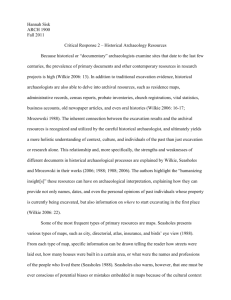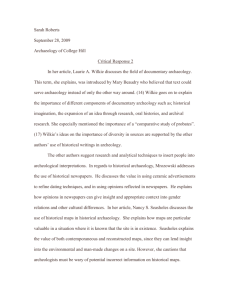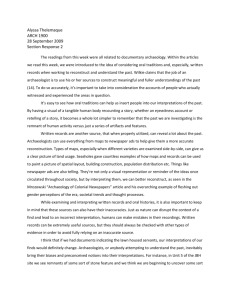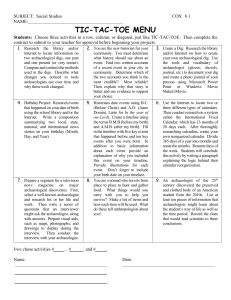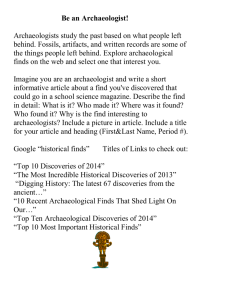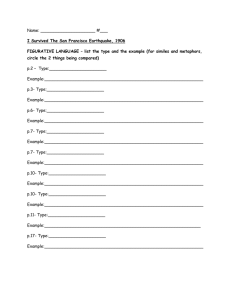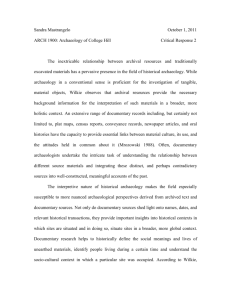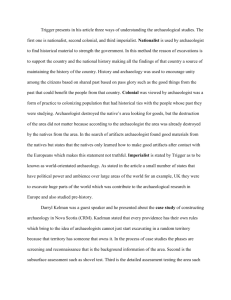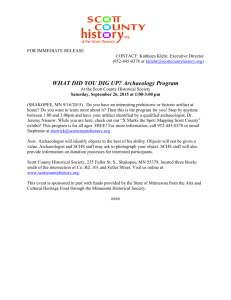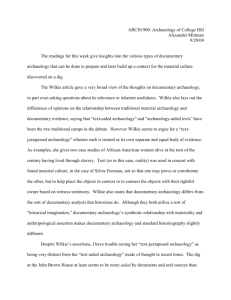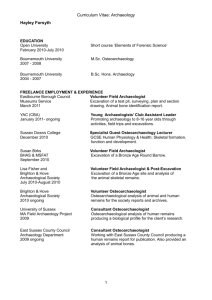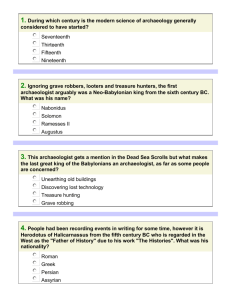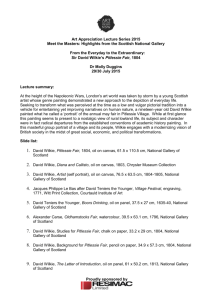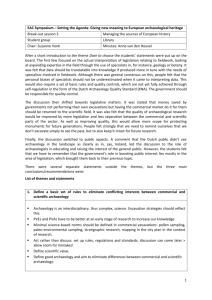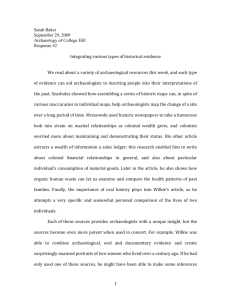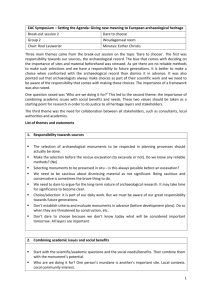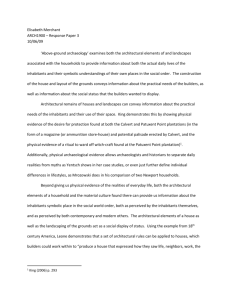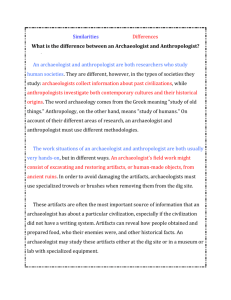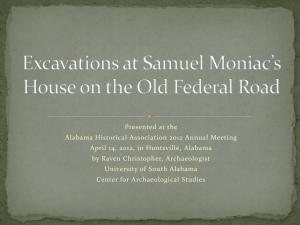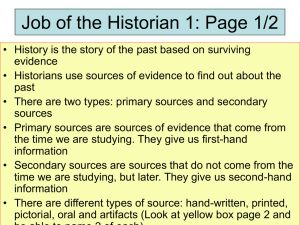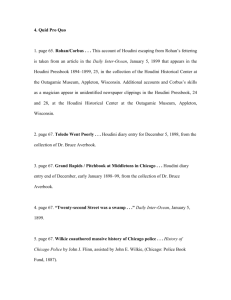bercovitch.response2
advertisement
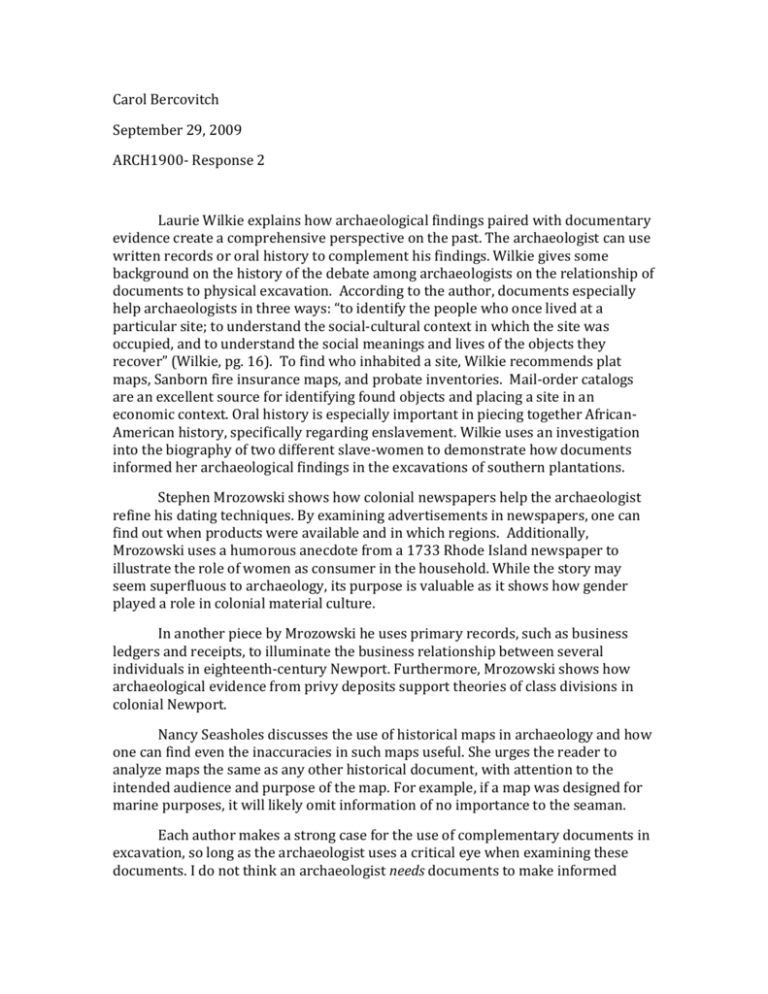
Carol Bercovitch September 29, 2009 ARCH1900- Response 2 Laurie Wilkie explains how archaeological findings paired with documentary evidence create a comprehensive perspective on the past. The archaeologist can use written records or oral history to complement his findings. Wilkie gives some background on the history of the debate among archaeologists on the relationship of documents to physical excavation. According to the author, documents especially help archaeologists in three ways: “to identify the people who once lived at a particular site; to understand the social-cultural context in which the site was occupied, and to understand the social meanings and lives of the objects they recover” (Wilkie, pg. 16). To find who inhabited a site, Wilkie recommends plat maps, Sanborn fire insurance maps, and probate inventories. Mail-order catalogs are an excellent source for identifying found objects and placing a site in an economic context. Oral history is especially important in piecing together AfricanAmerican history, specifically regarding enslavement. Wilkie uses an investigation into the biography of two different slave-women to demonstrate how documents informed her archaeological findings in the excavations of southern plantations. Stephen Mrozowski shows how colonial newspapers help the archaeologist refine his dating techniques. By examining advertisements in newspapers, one can find out when products were available and in which regions. Additionally, Mrozowski uses a humorous anecdote from a 1733 Rhode Island newspaper to illustrate the role of women as consumer in the household. While the story may seem superfluous to archaeology, its purpose is valuable as it shows how gender played a role in colonial material culture. In another piece by Mrozowski he uses primary records, such as business ledgers and receipts, to illuminate the business relationship between several individuals in eighteenth-century Newport. Furthermore, Mrozowski shows how archaeological evidence from privy deposits support theories of class divisions in colonial Newport. Nancy Seasholes discusses the use of historical maps in archaeology and how one can find even the inaccuracies in such maps useful. She urges the reader to analyze maps the same as any other historical document, with attention to the intended audience and purpose of the map. For example, if a map was designed for marine purposes, it will likely omit information of no importance to the seaman. Each author makes a strong case for the use of complementary documents in excavation, so long as the archaeologist uses a critical eye when examining these documents. I do not think an archaeologist needs documents to make informed conclusions about material findings, for many ancient ruins have been uncovered and analyzed without such supporting documents. There is danger in making assumptions about the use of the John Brown House property based on documents that suggest so. I think a useful tool for our class would be to study documents to understand the social context of the JBH. How did other wealthy merchants document the land around their homes? As in any other field, I think it is most important for us to think critically about any material, whether artifact or document.

